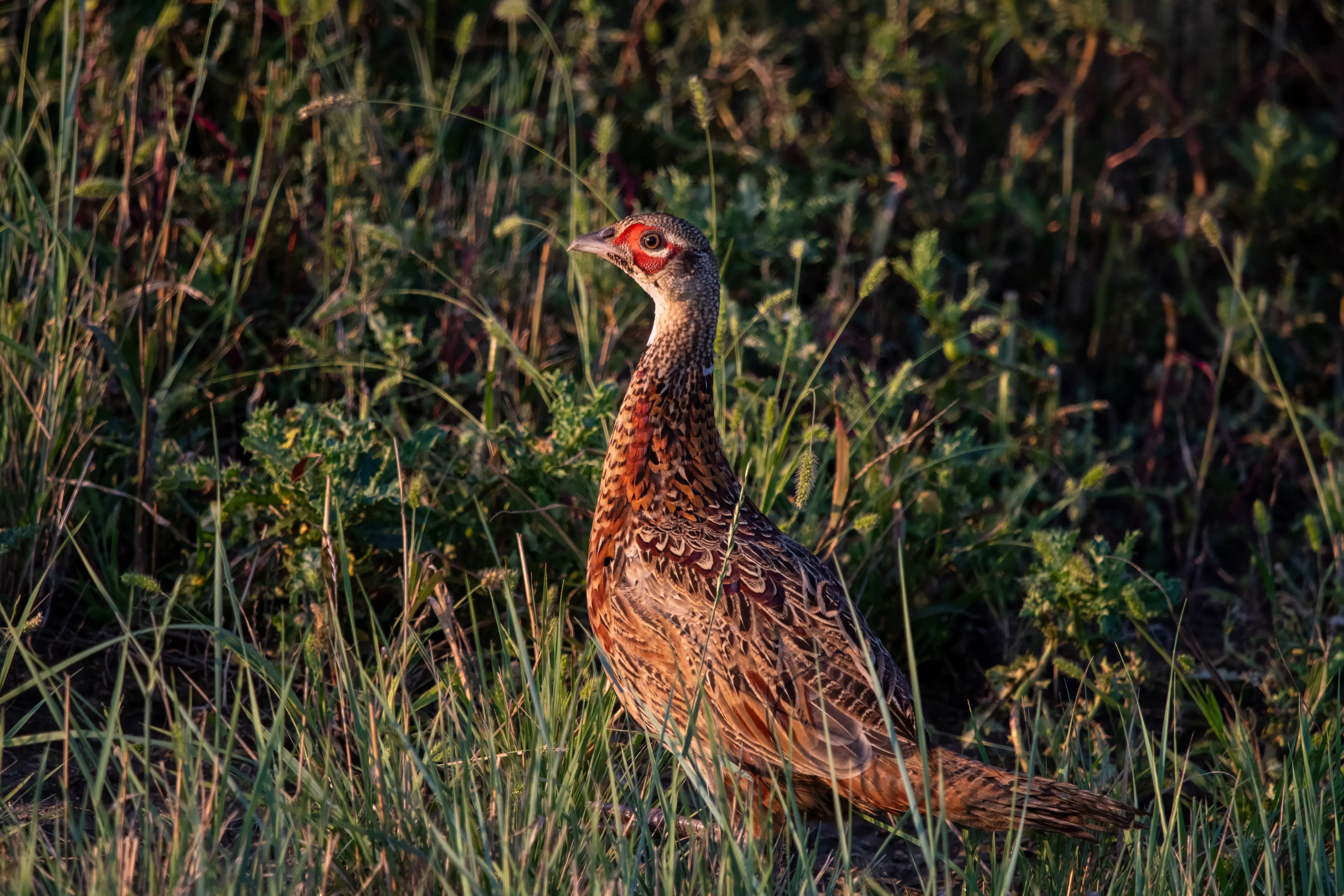
How We Get to Hunting. Spring and summer are often overlooked time periods in a pheasant’s life cycle, but are of the utmost importance in recruitment of new birds into the population. DEO Photo by Seth Owens/NDPF.
By Seth Owens
For many of us, pheasants only exist in the fall, when we can chase them behind our four-legged companions. We often see a rooster crow from a gravel road, or a pair strutting through a stubble field in May, but the birds pretty much drop off our radar. Though our minds turn toward hunting in the fall, we all must consider the spring and summer months for the birds, as these seasons are the most influential on populations.
Those post-thaw months are crucial for pheasants. The severity of winter and the availability of thermal cover and winter forage all directly influence the body condition of birds as they come into springtime. Throughout the spring, the diets of hen pheasants make a substantial shift towards consuming more insect and animal proteins to rebuild fat reserves and prepare themselves for egg production. Hen body mass often peaks in April. Roosters and one or more hens are a somewhat common sight on roadsides or in pastures and wheat stubble. Pairs and harems begin to form around April, but conditions and weather can delay or advance this timing by a small amount.
After pairing, hens begin to build their nests and incubate. May and June is the peak season for nesting, and broods begin to hatch shortly afterwards. Pheasants and many grassland birds are ground nesters. Nests are commonly made in areas with residual cover from the last growth year. Areas of tall grasses and forbs, dry wetland edges, and grassy ditches and right-of-ways, and even some cover crop fields are utilized. Nesting and brood rearing habitat is sensitive, and intensive grassland disturbance should be avoided during the incubation and brood rearing season. This is why there are many recommendations to delay haying until August 1. By that point, most hens have been successful at one of their nesting attempts.
Hens will lay egg clutches until they are successful. Each nesting attempt is physically taxing for a hen, and subsequent nesting attempts tend to have smaller clutch sizes. This means that successful early nesting attempts are crucial for us to see those larger upticks in populations. Chicks depend on habitats with overhead cover and navigable understories. Excessive thatch on the ground can make it difficult for chicks to travel across habitats. If a hen is successful with incubation, but loses her chicks due to predation, disturbance, or starvation, she will likely not make another attempt to nest and all of her reproductive potential is gone for that year.
Throughout the summer, hens will tend tightly to their chicks, leading them to areas with ample food resources and teaching them to be wary of potential dangers. Chicks heavily rely on insects during their first stages of growth. Insect protein is necessary for the growth of muscles, bones, feathers, and more. Animal and insect-based foods compose approximately 75 to 100 percent of all food consumed in this timeframe, but chicks are not picky and the type of insects and animals consumed depends on availability. In the northern Great Plains, grasshoppers and caterpillars are often some of the primary food sources. After about four to six weeks, chicks will begin to consume more plant matter, with wild seeds and waste grains being a large component of their diets. The chicks remain with their hens for 70 to 80 days before becoming independent enough to go off alone.
Spring and summer are crucial seasons in the life of grassland birds, especially our pheasants we love to hunt. By understanding a bit more about these ‘behind-the-scenes’ periods of birds in our offseasons, we can cater our conservation practices, build our habitats, and better preserve our grasslands with them in mind.
Seth Owens is a Dakota Edge Outdoors contributing writer and the Education and Outreach Coordinator for North Dakota Pheasants Forever.
